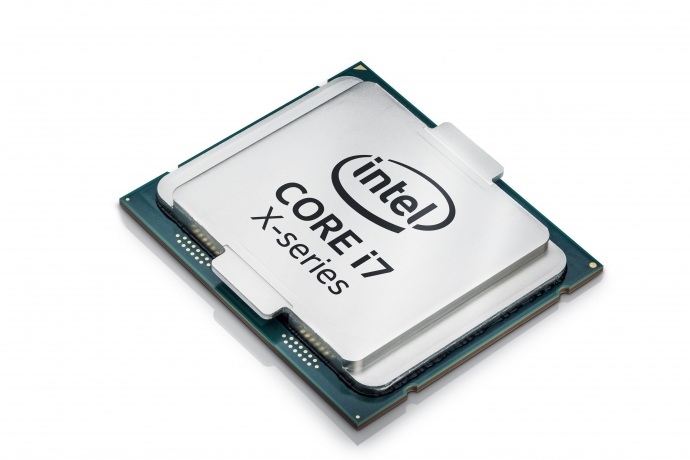According to computer hardware review site HardOCP, chip giant Intel (INTC -3.67%) is expected to launch refreshed versions of its Skylake-X chips for the high-end desktop (HEDT) market late in the third quarter of 2018, or early in the fourth quarter.
The site claims these chips will be identical to the currently shipping Skylake-X processors, but that Intel will make a critical change to the packaging design to improve the temperatures of the chips. Moreover, HardOCP says Intel will bump the operating frequencies of the chips by between 150MHz and 200MHz from the currently available Skylake-X parts.
While Intel releasing refreshed HEDT processors isn't newsworthy in itself, what is interesting is that HardOCP claims that Intel's Cascade Lake-X processors -- which should effectively be versions of the current Skylake-X chips, but built on an enhanced manufacturing technology to improve performance -- won't arrive until "mid to late" in the second quarter of 2019. The HardOCP post led off by saying it was "firmly rooted in the 'Guys Talk, You Hear Things,' category."
Here's why I think this Cascade Lake rumor doesn't hold up.

Image source: Intel.
Cascade Lake-X should be ready to launch later this year
According to Intel's own statements, the Cascade Lake-SP processors for the data center market should arrive sometime in the second half of 2018. Relatively recent Intel product roadmap leaks have indicated that Cascade Lake-SP is scheduled to launch in the third quarter of 2018.
Since Cascade Lake-X is going to be based on the same silicon as Cascade Lake-SP but repackaged for the high-end desktop market, it's highly unlikely that Intel would sit on it for additional quarters -- especially when Intel continues to face fierce competition from Advanced Micro Devices' (AMD -4.76%) Threadripper line of processors in this market segment.
It's also worth noting that HardOCP claims that the refreshed Skylake-X parts will be able to run at 5GHz frequencies out of the box, which is something that not even the best, cherry-picked Skylake-X parts can run at today using air or liquid cooling even pushed well out of specification (4.7GHz on a ten-core part is considered an exceptionally good result). Cascade Lake-X, on the other hand, should be able to run at such frequencies thanks to design enhancements and an improved manufacturing technology.
Moreover, if it were true that Intel plans to launch Cascade Lake-X in the second quarter of 2019, or even the second half of 2019, then Intel would be a sitting duck in the HEDT market as AMD is planning to introduce its third-generation Threadripper processor, known as Castle Peak, sometime in 2019.
Castle Peak is expected to be based on AMD's Zen 2 processor architecture and should also be manufactured on a foundry 7-nanometer technology. Such a technology would be at least a generation ahead of Intel's 14-nanometer++ manufacturing technology that'll be used to build Cascade Lake.
What's actually going to happen?
It seems likely that Intel will launch Cascade Lake-X later this year instead of a mere refresh of the Skylake-X parts, and sometime in 2019, Intel will release the successor to Cascade Lake-X in the high-end desktop market, Ice Lake-X.
Ice Lake-X should benefit from improvements along multiple vectors. It should have updated processor cores compared to the ones in Skylake-X/Cascade Lake-X, more of those cores, and be built using the much more efficient 10-nanometer+ manufacturing technology. Ice Lake-X should allow Intel to compete effectively with AMD's third-generation Threadripper parts.





